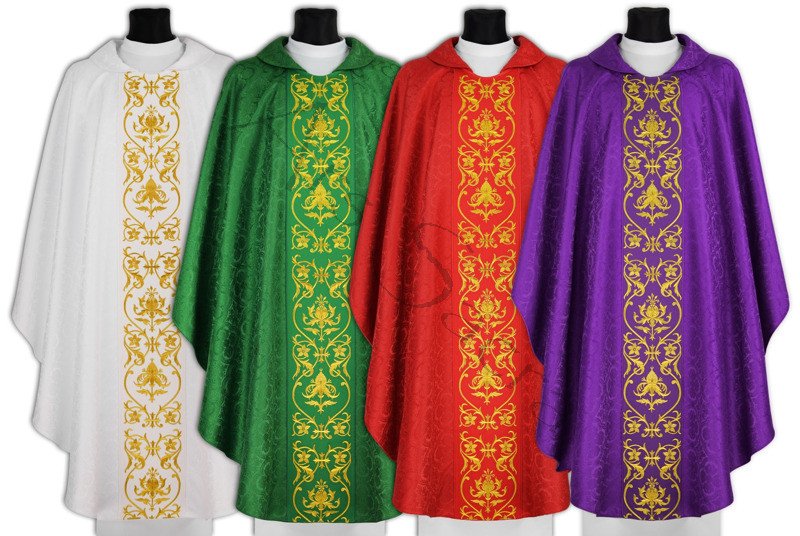Liturgical vestments - an essential for every priest

The cut and symbolism of the clerical garments have their origins in ancient Rome. Initially used as everyday clothing, the vestments of that time evolved into liturgical vestments for masses and liturgical rites.
Amice
Today, we distinguish between the outer vestments and those worn underneath. The first layer worn by the priest is the amice. It is a rectangular cloth of white linen that is wrapped around the shoulders and tied at the neck. It probably derives from the cloth worn by the Greeks and Romans to protect against sweat in summer and cold in winter. Today, the amice has similar functions. Its symbolism is linked to armour. The amice is supposed to protect against the temptations of the devil.
Alb
Another of the so-called undergarments is the alb, derived from the well-known Roman tunic. Long, white and traditionally made of linen or hemp, it is now often made of cotton. It also has wide sleeves and a high collar, and is often richly embroidered. In ancient times it was worn loosely, and in the Middle Ages it began to be adjusted with a belt or cincture. This need arose from the fact that albs began to be sewn in a slightly different way, without being tailored to height and figure. Today, the alb is worn not only by priests, but also by other persons exercising liturgical functions.
Cincture
The aforementioned belt was originally made of linen and over time took on the appearance of a braided rope. It was also richly decorated with embroidery, precious stones and metals. Contemporary models of the cincture are not as decorative - they are usually white or in the colour of the chasuble.
Dalmatic
One of the daily vestments of the inhabitants of the Roman Empire was the dalmatic. Its modern equivalent still occupies an important place among liturgical vestments. The dalmatic is worn by deacons during Mass. It is richly decorated and, similar to the chasuble, can be made in any of the colours typical of liturgical vestments. It takes the form of a short, loose tunic with cutouts at the sides and long sleeves. It takes its name from Dalmatia. The people of that region wore it every day, and it began to be used as a liturgical vestment around the 3rd century.
Chasuble
... this is, in turn, the most decorative element of a priest's liturgical vestment. Its prototype was the mantle, a type of heavy cloak with a hood, originally used as a travelling garment before becoming an elegant vestment. Today, the chasuble is worn by priests, but years ago it was used by all ranks of the clergy, including deacons and acolytes. The chasuble has undergone many changes over the centuries, as its cut initially made it very difficult to move the hands freely.
Cope and stole
The upper cape, fastened under the neck, is of uncertain origin. Light and decorative, it was used during important ceremonies: processions and the administration of the sacraments. It was not reserved exclusively for priests - it was worn by priests, deacons and bishops. The same is true of the stole - a long sash worn around the neck and chest. Its prototype is thought to have been a piece of cloth worn to wipe away sweat from the face.
